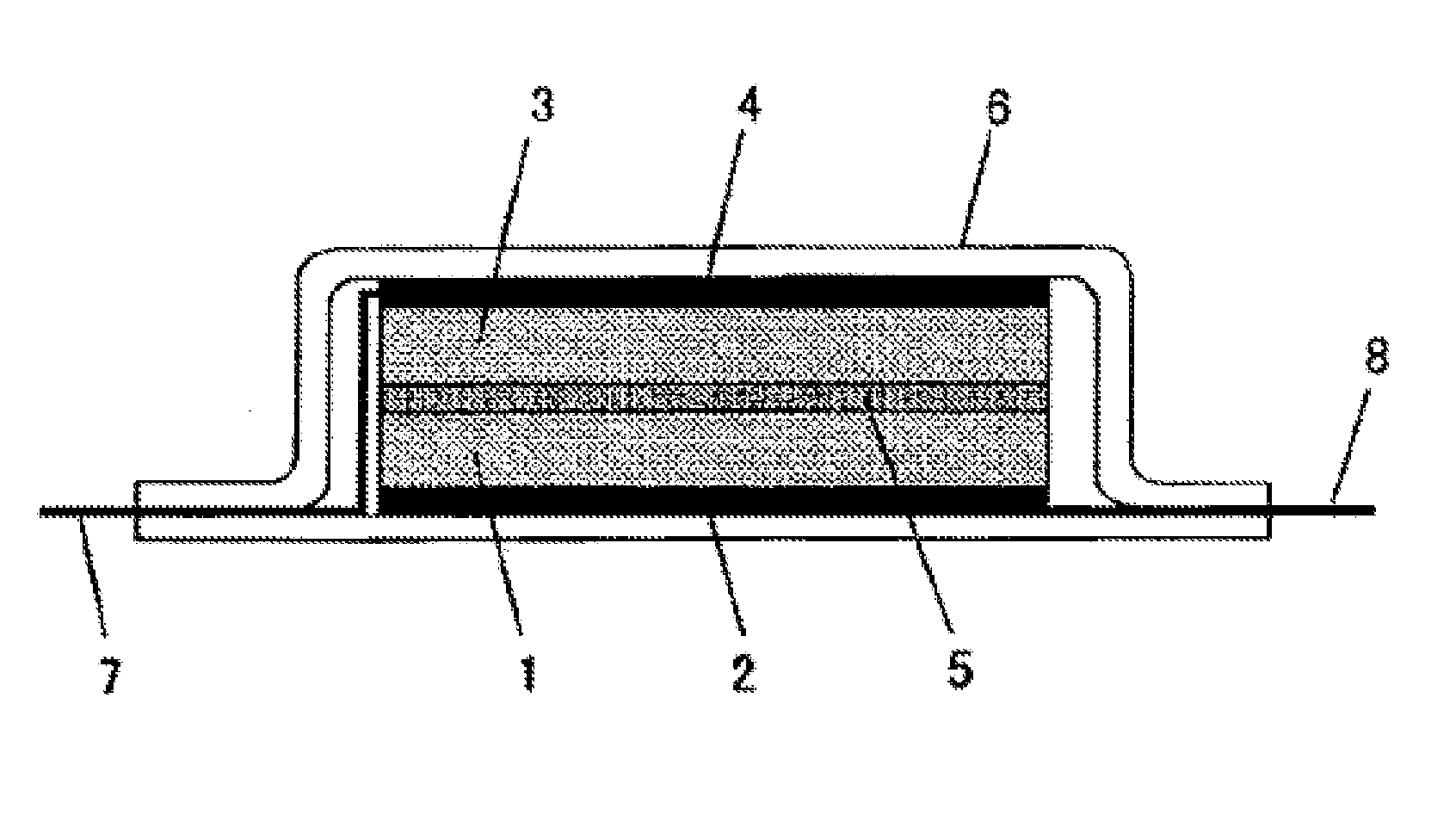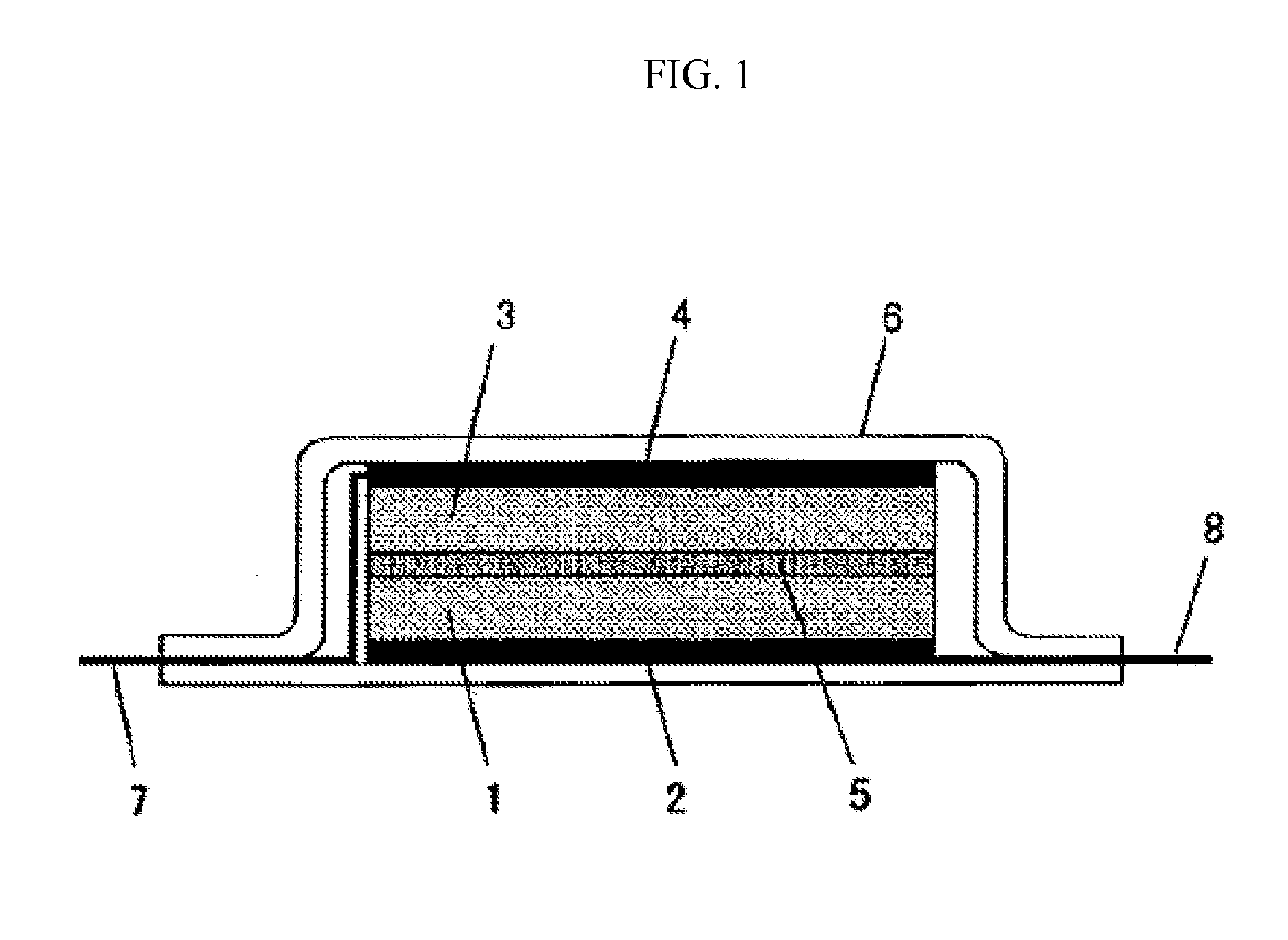Asymmetric and/or low-symmetric fluorine-containing phosphate for non-aqueous electrolyte solution
a technology of fluorine-containing phosphate and electrolyte solution, which is applied in the field of fluorine-containing phosphate, can solve the problems of insufficient battery performance of fluorine-containing phosphates in patent literatures 3, 4, 5, and 6, and volatile organic solvents, and achieves high flame retardancy and high-battery performance. high-rate charge-discharge characteristics, the effect of improving performan
- Summary
- Abstract
- Description
- Claims
- Application Information
AI Technical Summary
Benefits of technology
Problems solved by technology
Method used
Image
Examples
example 1
Synthesis of bis(2,2,2-trifluoroethyl) 2,2,3,3-tetrafluoropropyl phosphate
[0065]340 g of phosphorus trichloride, 184 g of t-butyl alcohol, and 496 g of 2,2,2-trifluoroethanol were mixed at 0° C., and the mixture was allowed to react at 60° C. for 3 hours. Then the resultant mixture was cooled to 0° C., and 193 g of chlorine gas was blown into the mixture over 6 hours. Next, 9.4 g of magnesium chloride and 409 g of 2,2,3,3-tetrafluoropropanol were added to the reaction mixture, and the resultant mixture was allowed to react at 130° C. for 4 hours. After cooling, 500 g of water and 16 g of sodium hydrogencarbonate were added to the reaction mixture. The resultant mixture was stirred, and the aqueous layer was removed. The organic layer was purified by distillation to obtain 743 g of bis(2,2,2-trifluoroethyl) 2,2,3,3-tetrafluoropropyl phosphate.
[0066]1H-NMR (400 MHz, CDCl3) δ 5.92 (tt, 1H), 4.39-4.51 (m, 6H)
[0067]19F-NMR (376 MHz, CDCl3) δ−76.01 (t, 6F), −125.15 (t, 2F), −137.97 (d, 2F...
example 2
Synthesis of bis(2,2,3,3-tetrafluoropropyl) 2,2,2-trifluoroethyl phosphate
[0069]340 g of phosphorus trichloride, 184 g of t-butyl alcohol, and 660 μg of 2,2,3,3-tetrafluoropropanol were allowed to react at 0° C., and the resultant mixture was allowed to react at 60° C. for 3 hours. Then the reaction mixture was cooled to 0° C., and 196 g of chlorine gas was blown thereinto over 6 hours. Next, 9.4 g of magnesium chloride and 310 g of 2,2,2-trifluoroethanol were added to the reaction mixture, and the resultant mixture was allowed to react at 130° C. for 4 hours. After cooling, 500 g of water and 16 g of sodium hydrogencarbonate were added to the reaction mixture. The resultant mixture was stirred, and the aqueous layer was removed. The organic layer was purified by distillation to obtain 765 g of bis(2,2,3,3-tetrafluoropropyl) 2,2,2-trifluoroethyl phosphate.
[0070]EI-MS m / z 389 [M-F]+, 388 [M-HF]+, 307, 277, 257, 227, 195, 163, 155, 143, 115, 95, 83, 69, 64, 51, 33
example 3
Synthesis of bis(2,2,2-trifluoroethyl) 2,2-difluoroethyl phosphate
[0071]The same procedure as in Example 1 was repeated except that 244 g of 2,2-difluoroethanol was used instead of 409 g of 2,2,3,3-tetrafluoropropanol to thereby obtain 616 g of bis(2,2,2-trifluoroethyl) 2,2-difluoroethyl phosphate.
[0072]1H-NMR (400 MHz, CDCl3) δ 5.97 (tt, 1H), 4.38-4.46 (m, 4H), 4.23-4.33 (m, 3H)
[0073]19F-NMR (376 MHz, CDCl3) δ−75.99 (t, 6F), −127.67 (dt, 2F)
[0074]EI-MS m / z 307 [M-F]+, 306 (M-HF)+, 275, 263, 245, 225, 207, 165, 163, 143, 115, 83, 69, 64, 51, 33
PUM
| Property | Measurement | Unit |
|---|---|---|
| weight ratio | aaaaa | aaaaa |
| weight ratio | aaaaa | aaaaa |
| physical properties | aaaaa | aaaaa |
Abstract
Description
Claims
Application Information
 Login to View More
Login to View More - R&D
- Intellectual Property
- Life Sciences
- Materials
- Tech Scout
- Unparalleled Data Quality
- Higher Quality Content
- 60% Fewer Hallucinations
Browse by: Latest US Patents, China's latest patents, Technical Efficacy Thesaurus, Application Domain, Technology Topic, Popular Technical Reports.
© 2025 PatSnap. All rights reserved.Legal|Privacy policy|Modern Slavery Act Transparency Statement|Sitemap|About US| Contact US: help@patsnap.com



